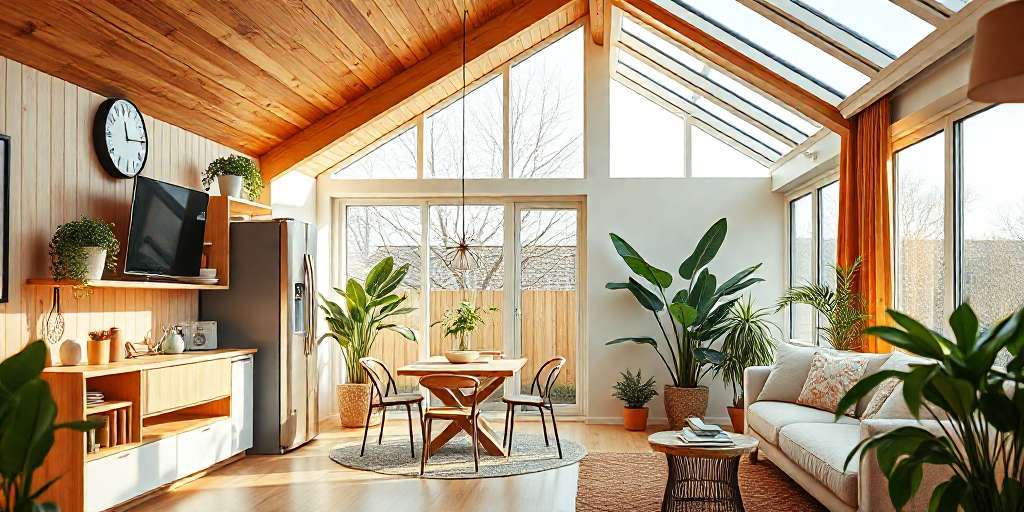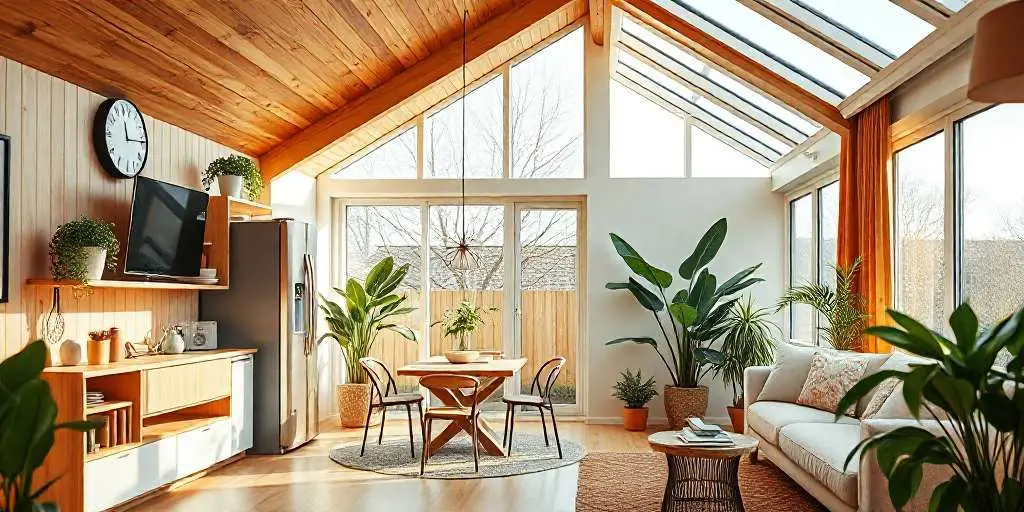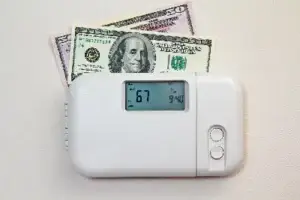How to Improve Energy Efficiency at Home and Save on Electricity Bills
Improving Energy Efficiency at home is essential for reducing energy bills and minimizing environmental impact. Simple changes can lead to significant savings and enhance comfort within the living space. This article explores various strategies, including energy audits, sealing air leaks, and upgrading appliances. Each method provides practical steps to create a more energy-efficient home.

Conducting an Energy Audit
Conducting an energy audit is a vital first step in improving energy efficiency at home. It helps identify areas where energy is wasted and suggests potential enhancements for better performance and savings.
Importance of an Energy Audit
An energy audit plays a crucial role in understanding how energy is being used within a home. By pinpointing inefficiencies, homeowners can make informed decisions on where to invest in improvements.
Key benefits of performing an energy audit include:
- Identifying energy wastage: Understanding specific areas causing energy loss can lead to targeted improvements.
- Financial savings: A detailed audit often reveals potential cost savings that can be captured through various upgrades.
- Enhanced comfort: Addressing energy inefficiencies often results in a more comfortable living environment.
- Increased property value: Implementing energy-efficient solutions can boost the overall value of a home.
Tools and Techniques for an Effective Audit
An effective energy audit requires a combination of tools and techniques to accurately assess a home’s energy usage. Various methods can be utilized to gather the necessary data.
Visual Inspection
A thorough visual inspection often forms the foundation of an energy audit. This inspection usually involves checking for visible signs of energy loss, such as:
- Drafts around doors and windows.
- Insulation quality in attics and basements.
- Condition and age of heating and cooling systems.
- Seals and gaskets around appliances.
Blower Door Test
A blower door test is an essential tool for assessing air leakage in a home. This process involves using a calibrated fan to create a pressure difference, which helps identify leaks and drafts.
- The test quantifies the amount of air leakage occurring.
- It allows for more accurate recommendations on sealing and insulation improvements.
Infrared Cameras
Infrared cameras provide a non-invasive way to locate heat loss and air leaks. These cameras can visualize temperature differences, making it easier to see areas needing attention.
- They reveal insulation issues in walls and ceilings.
- They help identify hot and cold spots around windows and doors.
Energy Monitoring Devices
Energy monitoring devices can track real-time energy consumption to provide insights into how energy is used throughout the day. Understanding usage patterns helps homeowners identify times of peak consumption.
Utility Company Programs
Many utility companies offer energy audit programs, sometimes at no cost to the homeowner. These programs often provide the necessary equipment and professional expertise to ensure accurate assessments.
Utilizing these resources can greatly enhance the effectiveness of an energy audit by leveraging existing knowledge and technologies.
Sealing Air Leaks
Sealing air leaks is a crucial step in improving the energy efficiency of a home. By addressing these leaks, homeowners can significantly reduce energy consumption and enhance overall comfort.
Common Areas for Air Leaks
Air leaks often occur in various parts of the house, leading to unwanted drafts and increased energy costs. Identifying these common areas is essential for effective sealing.
- Windows and doors: Poorly sealed or outdated windows and doors can lead to substantial heat loss.
- Attics: Gaps and holes in the attic can allow warm air to escape and cold air to enter.
- Basements and crawl spaces: Unsealed areas in these locations are prime spots for air infiltration.
- Electrical outlets and switches: These can be overlooked but may contribute to air leakage.
- Chimneys and vent pipes: Spaces around chimneys, flues, and vent pipes can create airflow issues.
- Wall penetrations: Any area where pipes or cables enter the home can allow air to pass through.
Methods to Seal Air Leaks
Various methods can be employed to effectively seal air leaks and enhance a home’s insulation. Each method varies in complexity and cost, providing multiple options for homeowners.
Caulking
Caulking is a flexible material used to seal cracks and openings, preventing airflow. It is particularly effective for stationary areas around windows, doors, and baseboards. The proper application of caulk helps maintain a weather-tight seal.
- Select a high-quality caulk appropriate for the material being sealed.
- Ensure surfaces are clean and dry before application.
- Use a caulk gun for smooth and even application.
Weatherstripping
Weatherstripping creates a barrier against air leaks on moving surfaces such as doors and windows. It can be made from various materials, including foam, rubber, and vinyl. Installing weatherstripping is a cost-effective way to enhance energy efficiency.
- Choose the right type of weatherstripping based on the area being sealed.
- Measure carefully to ensure a snug fit.
- Replace old or damaged weatherstripping regularly to maintain effectiveness.
Spray Foam Insulation
Spray foam insulation offers an excellent solution for sealing gaps and cracks in hard-to-reach areas. It expands upon application, filling even the smallest openings for maximum coverage. This method provides not only air sealing but also superior insulation properties.
- Use spray foam in attics, crawl spaces, and around ducts.
- Follow safety guidelines during application, including wearing protective gear.
- Allow time for foam to cure before covering or sealing.
Improving Insulation
Enhancing insulation within a home is essential for maintaining comfortable indoor temperatures while reducing energy expenditure. Proper insulation helps to keep warm air in during the winter and cool air in during the summer, significantly improving overall energy efficiency.
Types of Insulation
There are several types of insulation available, each with its own unique properties and applications. Understanding these options is crucial for selecting the right insulation materials for specific areas of the home.
Fiberglass
Fiberglass insulation is one of the most commonly used types due to its effectiveness and affordability. It comes in batts, rolls, or loose-fill, making it versatile for various applications. Fiberglass is non-combustible and does not absorb moisture, which helps prevent mold growth. However, proper handling is required to avoid skin irritation.
Foam Board
Foam board insulation provides a high R-value per inch of thickness, making it an efficient choice for controlling heat transfer. It is typically used in walls, roofs, and foundations. The rigid panels can be cut to size and provide excellent thermal resistance, moisture control, and can even serve as a vapor barrier if installed correctly.
Blown-in Cellulose
Blown-in cellulose insulation is made from recycled paper products treated for fire resistance. It is typically used in attics and walls where it can fill gaps and voids effectively. This type of insulation is environmentally friendly and has excellent soundproofing qualities. The installation requires special equipment, making it a job usually done by professionals.
Key Areas for Insulation
Insulation should be prioritized in certain areas of the home where heat loss or gain can occur most dramatically. Focusing on these key areas can lead to significant improvements in energy efficiency.
Attics
The attic is often the most critical area for insulation, as heat rises and can easily escape through an uninsulated attic. Properly insulating the attic helps maintain consistent indoor temperatures. Insulating with a minimum of R-30 is typically recommended to achieve optimal performance.
Walls
Insulating walls can significantly reduce energy loss, particularly in exterior walls that are exposed to outdoor elements. Both fiberglass batts and blown-in cellulose are effective options here. It is essential to ensure that walls are sealed correctly to maximize the benefits of insulation.
Crawl Spaces
Crawl spaces are another area where insulation is crucial. Insulating the walls of the crawl space protects the home from drafts and moisture issues. It is advisable to use insulated skirting or foam board in these spaces to prevent heat loss. Ensuring that crawl spaces are also properly ventilated will help maintain insulation effectiveness.
Enhancing Windows and Doors
Optimizing windows and doors is crucial for improving energy efficiency. Proper installations and maintenance can significantly reduce energy loss while enhancing comfort in the home.
Installing ENERGY STAR Certified Products
Choosing ENERGY STAR certified windows and doors is an effective way to improve energy efficiency. These products meet rigorous energy efficiency guidelines set by the U.S. Environmental Protection Agency, resulting in enhanced insulation and reduced energy costs. When selecting windows and doors, it’s important to consider factors such as:
- U-factor: Measures the rate of heat transfer; a lower U-factor indicates better insulation.
- Solar heat gain coefficient (SHGC): Indicates how much solar radiation is transmitted through windows. A lower SHGC can help reduce cooling costs.
- Air leakage rating: Measures the amount of air that can escape through the windows. Certified products should limit air leakage effectively.
Investing in these certified products not only contributes to energy savings but also enhances the overall comfort of a living space.
Using Storm Windows and Doors
Storm windows and doors provide an additional layer of protection against outdoor elements. They are particularly beneficial in regions with extreme weather conditions. By installing storm windows and doors, homeowners can achieve several advantages:
- Improved insulation: Storm windows offer extra insulation, reducing heat loss during winter and keeping interiors cooler in summer.
- Noise reduction: The added layer can help diminish outside noise, creating a more peaceful indoor environment.
- Increased durability: They protect the primary windows and doors from harsh weather, prolonging their lifespan.
Proper installation is essential to reap the benefits of storm products. It’s advisable to ensure a tight seal around all edges to prevent drafts and maximize performance.
Proper Sealing and Maintenance
Effective sealing and regular maintenance are key to ensuring windows and doors operate efficiently. Over time, seals can degrade, leading to air leaks and increased energy expenses. To maintain optimal performance, it is necessary to:
- Inspect weatherstripping: Regularly check for wear and replace any damaged sections to minimize air leaks.
- Recaulk around frames: Gaps can develop over time, allowing air to escape. Applying fresh caulk helps to eliminate these leaks.
- Clean tracks and frames: Keeping moving parts and frames clean ensures proper functioning and longevity.
Consistency in maintenance not only improves energy efficiency but also extends the lifespan of windows and doors. By addressing small issues before they escalate, homeowners can enjoy significant savings over time.
Optimizing Heating and Cooling Systems
Optimizing heating and cooling systems is crucial for enhancing energy efficiency in the home. Doing so can lead to significant savings on energy bills while also contributing to a more comfortable living environment.
Thermostats and Programmable Controllers
The type of thermostat used can greatly influence the performance of heating and cooling systems. Modern thermostats come equipped with various features that allow for better control of energy consumption.
Choosing the Right Thermostat
When selecting a thermostat, homeowners have several options that cater to different needs and preferences. Key considerations include:
- Manual Thermostats: Basic models that require manual adjustment to change temperatures.
- Digital Thermostats: Offer more precise temperature settings and often come with a programmable feature.
- Smart Thermostats: Can be controlled remotely via smartphone apps and learn user preferences over time. Some models even adjust based on occupancy patterns.
Programming Tips
Programing a thermostat effectively can lead to substantial energy savings. It is recommended to:
- Set lower temperatures during winter nights and higher temperatures during summer nights.
- Schedule heating and cooling to match daily routines, ensuring systems are off when homes are unoccupied.
- Utilize vacation modes when away for extended periods to reduce unnecessary energy use.
Regular HVAC Maintenance
Regular maintenance of HVAC systems is essential for optimal performance. Neglecting routine checks can lead to reduced efficiency and more costly repairs in the long run.
Cleaning Filters
Regularly cleaning or replacing filters is one of the easiest ways to maintain HVAC efficiency. Dirty filters can restrict airflow, making systems work harder and leading to increased energy consumption. It is advisable to check filters every month and replace or clean them as needed.
Annual Inspections
Scheduling annual inspections with a professional technician can help identify potential issues. These inspections typically include:
- Checking for refrigerant leaks and ensuring levels are adequate.
- Assessing the integrity of ducts and sealing any leaks to optimize airflow.
- Inspecting electrical connections and mechanical components to ensure safe and efficient operation.
Upgrading HVAC Systems
Older HVAC systems can be less efficient than newer models. Exploring modern options can lead to significant energy savings and improved comfort.
High-Efficiency Units
Investing in high-efficiency units can be beneficial. These systems are designed to consume less energy while providing effective heating and cooling. Look for models with:
- High Seasonal Energy Efficiency Ratios (SEER) for air conditioning.
- High Annual Fuel Utilization Efficiency (AFUE) ratings for heating.
- Advanced features that optimize performance based on environmental conditions.
Heat Pumps
Heat pumps can be an effective alternative to traditional heating and cooling systems, particularly in moderate climates. They work by transferring heat rather than generating it, leading to lower energy consumption. Key benefits of heat pumps include:
- Dual Function: Provide both heating and cooling, offering year-round efficiency.
- Environmentally Friendly: Use electricity more efficiently than combustion systems, reducing greenhouse gas emissions.
- Incentives: Many areas offer financial incentives for installing energy-efficient heat pumps, making them a cost-effective choice.
Efficient Use of Appliances
Using appliances efficiently is crucial for reducing energy consumption and lowering utility bills. Selecting energy-efficient models and employing smart usage practices can lead to significant savings without compromising comfort.
ENERGY STAR Rated Appliances
One of the most effective ways to enhance energy efficiency in the home is by investing in ENERGY STAR rated appliances. These appliances meet strict energy efficiency guidelines set by the U.S. Environmental Protection Agency and the Department of Energy. By choosing such appliances, homeowners can reduce energy usage by approximately 10 to 50 percent compared to standard models, which translates into considerable financial savings over time.
Tips for Using Appliances Efficiently
Beyond selecting ENERGY STAR rated appliances, implementing smart usage practices can further optimize energy consumption. Practical tips can significantly impact overall energy efficiency in daily routines.
Refrigerators
Refrigerators are one of the most energy-intensive appliances in the household. To ensure they operate efficiently, the following actions can be taken:
- Keep the temperature settings at 37 °F for the fridge and 0 °F for the freezer.
- Regularly clean the condenser coils to ensure optimal air circulation.
- Minimize the frequency of door openings to maintain internal temperature.
- Avoid placing hot foods directly into the refrigerator, as this can increase the overall temperature inside.
- Ensure door seals are intact; replace them if necessary to prevent cold air from escaping.
Washers and Dryers
Washing machines and dryers also contribute significantly to a household’s energy consumption. To maximize their efficiency, consider the following strategies:
- Use cold water for washing clothes whenever possible, as heating water consumes a substantial amount of energy.
- Only run full loads in both washers and dryers to maximize energy use.
- Choose the appropriate cycle settings based on the load type to avoid unnecessary energy use.
- Utilize dryer balls to improve airflow and reduce drying time.
- Regularly clean the lint filter in dryers to ensure efficient operation and reduce fire hazards.
Water Heating Efficiency
Enhancing water heating efficiency is crucial for reducing energy consumption and lowering utility bills. By selecting the right water heater and implementing smart practices, households can significantly decrease energy usage associated with heating water.
Types of Water Heaters
Tankless Water Heaters
Tankless water heaters, also known as on-demand water heaters, provide hot water only as needed. This means they do not store hot water in a tank, which eliminates standby heat loss. They are generally more energy-efficient than traditional tank water heaters and can save money in the long term. Tankless systems can be powered by electricity, natural gas, or propane, and their installation can vary based on the home’s size and hot water requirements.
Heat Pump Water Heaters
Heat pump water heaters are highly efficient, utilizing electricity to move heat from one place to another instead of generating heat directly. This technology can be two to three times more efficient than traditional water heaters, as it leverages ambient heat from the air or ground. They are best suited for moderate climates and can significantly decrease energy expenses when used in conjunction with other energy-efficient systems.
Reducing Water Heating Costs
Lowering Temperature Settings
Adjusting the temperature settings on a water heater is a straightforward method to improve efficiency. The recommended temperature for most household needs is 120°F. Lowering the temperature from higher settings can lead to a reduction in energy usage, as less energy is required to maintain hot water. This adjustment not only minimizes costs but also reduces the risk of scalding, making it a safe choice for households.
Insulating Water Heaters
Insulating both traditional tank water heaters and the hot water pipes connected to them can significantly enhance energy efficiency. Insulation helps to maintain the desired water temperature, reducing the need for the heater to reheat water unnecessarily. Insulation blankets can be used for tank heaters, while pipe insulation can be wrapped around hot water pipes to minimize heat loss. This simple investment often pays off quickly through lower energy bills.
Reducing Phantom Loads
Phantom loads refer to the energy consumed by devices when they are turned off but still plugged in. This energy usage can add up over time, leading to wasted electricity and increased energy bills. Identifying and addressing these phantom loads is crucial for improving overall energy efficiency in the home.
Identifying Phantom Loads
Many household devices continue to draw power even when they are not actively in use. Identifying which appliances contribute to phantom loads can be challenging, but it is an essential step in reducing unnecessary energy consumption. Common culprits include:
- Televisions and streaming devices
- Computers and peripherals like printers
- Chargers for phones, tablets, and laptops
- Kitchen appliances like microwaves with clocks
Using a watt-meter can help determine how much energy these devices consume while not in active use, providing clarity and information for future energy-saving decisions.
Solutions to Reduce Standby Power
Addressing phantom loads can lead to significant savings on energy bills. Implementing a few straightforward strategies can effectively eliminate unnecessary standby power consumption.
Unplugging Devices
The simplest method to reduce phantom loads is to unplug devices when they are not in use. By disconnecting chargers and other electronics, households can prevent these items from drawing power. This practice, though sometimes inconvenient, has a direct impact on energy savings.
For those who frequently use certain devices, establishing a routine to unplug them after use can help incorporate this practice into daily life. Setting reminders can also encourage more consistent behavior regarding unplugging appliances.
Using Smart Power Strips
Smart power strips are an effective tool designed to combat phantom loads by allowing multiple devices to be controlled simultaneously. These strips can detect when a device is turned off and cut power to all connected devices, minimizing the energy consumed in standby mode. Benefits include:
- Automatic shut-off for devices not in use
- Remote control features via smartphone apps
- Individual control of multiple outlets for greater flexibility
- Surge protection to safeguard electronics
Investing in smart power strips not only reduces energy waste but also enhances convenience for managing electronic devices. This technology provides a modern solution to the persistent problem of phantom energy usage.
Energy-Efficient Landscaping
Energy-efficient landscaping plays a crucial role in enhancing a home’s overall energy performance. By designing outdoor spaces with natural elements, homeowners can maximize energy savings and improve comfort within their homes.
Landscape Design for Energy Efficiency
Effective landscape design focuses on strategically planning vegetation placement, optimizing sunlight exposure, and reducing energy consumption. Thoughtfully designed landscapes can provide natural insulation, protect homes from harsh weather, and minimize reliance on artificial energy sources.
Key design principles include:
- Utilizing native plants that require less water and maintenance.
- Creating windbreaks with trees and shrubs to reduce heating costs during winter.
- Using plants that provide shade on the west side of the house to lower cooling needs during summer months.
Benefits of Shading
Incorporating shading elements into landscaping can significantly lower indoor temperatures and reduce energy consumption. Effective shading strategies can help maintain a comfortable environment in homes, leading to decreased use of air conditioning and heating systems.
Planting Trees
Planting deciduous trees strategically around the home can provide significant shading benefits. During the summer, these trees block sunlight from hitting the house, keeping it cooler naturally. In winter, they lose their leaves, allowing sunlight to warm the home.
Benefits of planting trees include:
- Reducing cooling costs by up to 30%.
- Improving air quality and providing habitat for wildlife.
- Enhancing the aesthetic appeal of the property.
Shading Devices
In addition to trees, installing shading devices can further enhance energy efficiency in homes. Awnings, pergolas, and trellises can block direct sunlight while allowing for ventilation and natural light.
Options for shading devices include:
- Retractable awnings that provide adjustable shade.
- Trellises with climbing plants to offer natural coverage.
- Exterior roller shades on windows to reduce heat gain while maintaining views.
Renewable Energy Options
Exploring renewable energy options can lead to significant savings and a reduced carbon footprint in homes. Leveraging technologies like solar panels and solar water heaters enhances energy efficiency while contributing positively to the environment.
Solar Panels
Solar panels are a popular choice for homeowners looking to harness renewable energy. They convert sunlight into electricity, providing a sustainable power source that can significantly lower energy bills.
Installation Considerations
When installing solar panels, several factors should be considered to ensure optimal performance:
- Roof suitability: The roof should have adequate space and be structurally sound to support the solar panel system.
- Orientation and tilt: South-facing roofs with a tilt angle that maximizes sun exposure will capture the most energy.
- Local regulations: Homeowners must comply with building permits and local zoning laws regarding solar energy installations.
- Shading analysis: Nearby trees or buildings should be evaluated to prevent shading that could hinder solar panel efficiency.
Financial Incentives
Many homeowners can take advantage of various financial incentives for installing solar panels:
- Federal tax credits: The federal government offers a tax credit for a percentage of the installation costs, significantly reducing the overall expense.
- State incentives: Numerous states provide rebates or tax credits to encourage the adoption of solar energy.
- Net metering: Homeowners can often sell excess electricity back to the grid, further decreasing utility expenses.
- Financing options: Many companies offer financing plans that allow homeowners to pay for solar systems over time, making upfront costs more manageable.
Solar Water Heaters
Solar water heaters utilize solar energy to heat water for residential use, making them an efficient alternative to traditional water heating systems.
Types of Solar Water Heaters
There are two primary types of solar water heaters:
- Active systems: These systems use pumps to circulate water through the solar collectors. They are typically more efficient and suitable for colder climates.
- Passive systems: Relying on natural convection, passive systems are simpler and have fewer mechanical components, making them easier to maintain. They work best in warmer climates.
Installation and Savings
Installing a solar water heater involves various considerations for maximizing efficiency:
- Proper placement: Solar collectors should be installed in locations with maximum sunlight exposure throughout the day.
- System sizing: The system must be appropriately sized based on household hot water consumption to ensure adequate heating.
- Potential savings: Homeowners can expect significant reductions in water heating costs, often achieving payback in a few years based on energy savings.
Improving Home Lighting
Enhancing home lighting not only improves aesthetics but also contributes to energy efficiency. Using the right lighting solutions can significantly reduce electricity bills and create a more comfortable living space.
LED Lighting
LED lights are known for their energy efficiency and long lifespan. Unlike traditional incandescent bulbs, LEDs use a fraction of the energy to produce the same amount of light.
- Energy Savings: LEDs consume up to 80% less energy compared to incandescent bulbs, making them a popular choice for households aiming to reduce their energy consumption.
- Longevity: An LED bulb can last up to 25,000 hours or more, which means reduced replacement costs over time.
- Variety: Available in various colors and brightness levels, LEDs can be used in all areas of the home, including living rooms, kitchens, and outdoor spaces.
Installing LED lighting requires minimal effort, and the initial investment is often recouped quickly through energy savings. Moreover, many LED products are now available with dimmable features, enhancing their versatility and appeal.
Smart Lighting Solutions
Smart lighting systems offer innovative methods to control home lighting efficiently. These systems integrate advanced technology that allows users to manage lighting remotely or programmatically.
- Remote Control: Smart bulbs can be controlled via smartphone apps, giving homeowners the flexibility to adjust lighting while away from home.
- Scheduling: Many smart lighting systems allow users to set schedules for when lights should be turned on or off, which can minimize energy waste during unoccupied hours.
- Motion Sensors: Incorporating motion sensors ensures that lights are only activated when someone is present, further enhancing energy savings.
With the ability to customize lighting scenes according to specific needs, smart lighting solutions can adapt to various activities, from reading to entertaining, promoting both comfort and energy efficiency.
Daylighting Techniques
Utilizing natural light through daylighting techniques can dramatically reduce the need for artificial lighting throughout the day. This approach emphasizes the strategic placement of windows and reflective surfaces to optimize sunlight use.
- Window Design: Strategically placed windows maximize natural light while minimizing heat gain during summer months.
- Skylights: Installing skylights can effectively bring daylight into spaces that might otherwise have limited access to natural light.
- Reflective Surfaces: Using light-colored paint and mirrors can enhance the distribution of natural light within rooms, reducing reliance on electric illumination.
Incorporating daylighting techniques not only conserves energy but also contributes to a healthier living environment. Properly illuminated spaces can improve mood and productivity while decreasing the overall energy footprint of a household.





